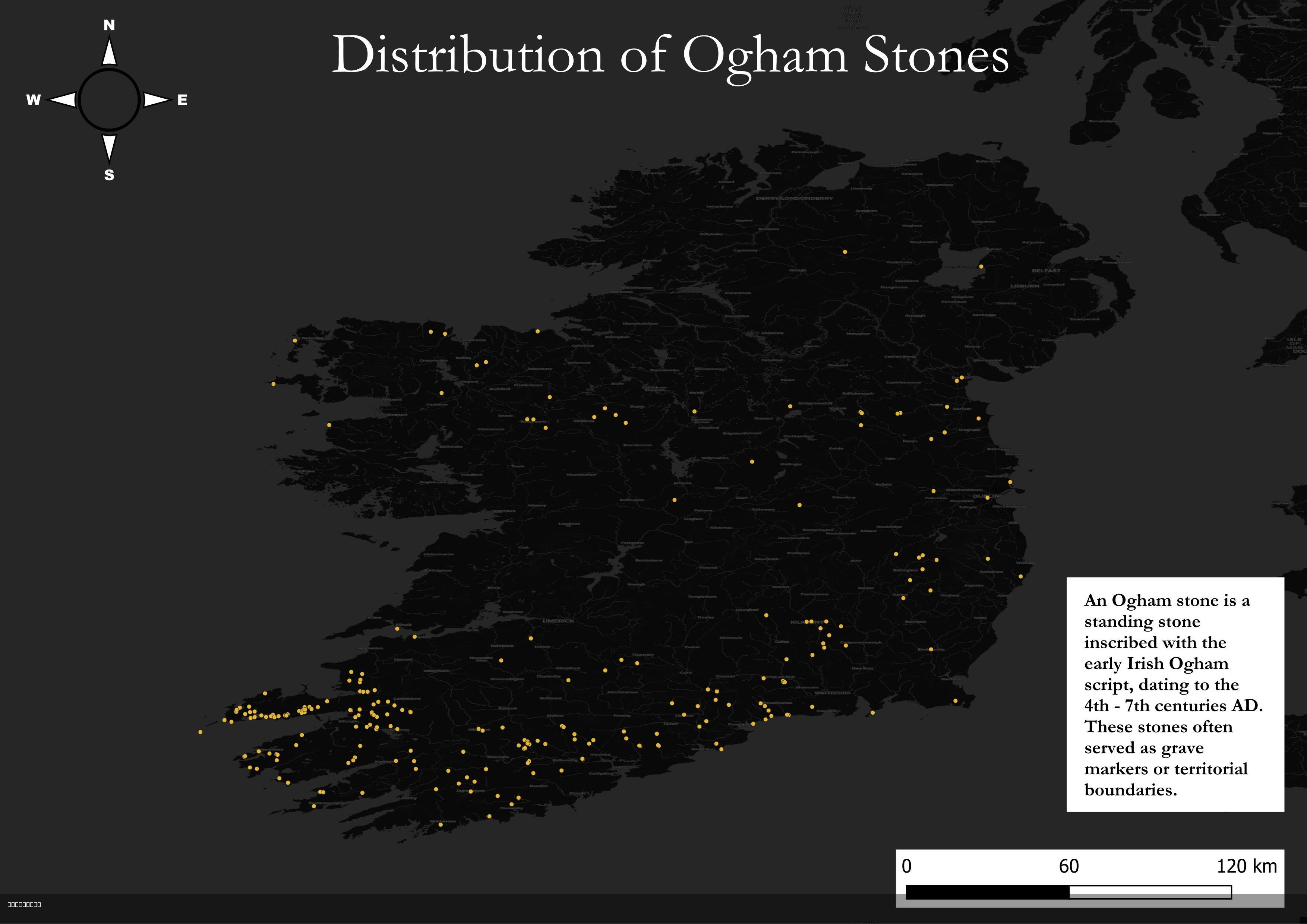Distribution of Ogham Stones in Ireland Map


Marcus Rodriguez
Historical Geography Expert
Marcus Rodriguez specializes in historical cartography and geographic data analysis. With a background in both history and geography, he brings unique...
Geographic Analysis
What This Map Shows
This map visualizes the distribution of Ogham stones across Ireland, showcasing their geographical locations in relation to historical monuments. Ogham stones, which date back to the 4th to 7th centuries AD, are inscribed with a unique script used primarily for marking grave sites or significant landmarks. By combining historical monument data from the National Monument Service (Ireland) with Open Data (UK), this map provides a comprehensive overview of where these ancient artifacts can be found. The visual representation reveals not just the density of Ogham stones but also their potential correlation with geographical features and elevation, setting the stage for deeper analysis.
Deep Dive into Ogham Stones
Ogham stones are a remarkable aspect of Ireland's cultural heritage, often found in rural areas, graveyards, and sites of ancient significance. The inscriptions on these stones represent the earliest form of written language in Ireland, primarily used to signify names or commemorate individuals. Interestingly, the script consists of a series of strokes and notches along the edge of a stone, making it unique compared to other forms of writing of the time.
The presence of Ogham stones is not random; it is influenced by various factors including geography, settlement patterns, and cultural practices of early Irish society. These stones are mostly located in the southern and western regions of Ireland, particularly in counties Kerry and Cork, where evidence suggests a high concentration of early Christian and pre-Christian activity. Ever wondered why certain areas have more stones than others? It’s believed that these locations were not just chosen for their visibility but also for their accessibility, allowing communities to gather for memorials or other significant events.
Interestingly, the relationship between Ogham stones and their surrounding landscapes can provide insights into the socio-political structures of ancient Ireland. For instance, stones situated near ancient burial sites may indicate the importance of lineage and memory in those communities. Furthermore, the stones' proximity to natural features such as rivers and mountains suggests that these geographical elements played a role in the selection of sites for carving and erecting the stones.
Regional Analysis
When examining the map, notable clusters of Ogham stones emerge in specific regions. For example, in County Kerry, particularly around the Iveragh Peninsula, there is a rich concentration of Ogham stones. This area not only boasts a scenic landscape of mountains and coastal views but also has historical significance as a center of early Christian settlement. In contrast, other counties such as Dublin show fewer Ogham stones, which may reflect urbanization and changes in burial practices over the centuries.
In County Clare, the presence of Ogham stones near the Burren region raises intriguing questions about the interaction between early settlers and their environment. The Burren's unique limestone landscape may have served as both a practical resource and a spiritual one, offering a connection to the earth that was vital for early Irish communities. Furthermore, analyzing elevation data in conjunction with the distribution of Ogham stones could unveil patterns relating to ancient trade routes or migration paths, providing a deeper understanding of how geography influenced cultural practices.
Significance and Impact
The study of Ogham stones is significant not only for understanding Ireland’s historical landscape but also for its implications on heritage conservation and cultural identity. As we uncover more about these ancient relics, we gain insight into the lives of early Irish people, their beliefs, and their interactions with the environment. In today’s context, as we face challenges related to cultural preservation and tourism, understanding the distribution and significance of Ogham stones can inform strategies for protecting these valuable sites.
As we move forward with geographical analysis, including elevation data, we can expect to uncover even more about the relationship between the stones and their environments. This could lead to a better understanding of how ancient communities navigated their landscapes and the cultural narratives that emerged from these interactions. Ultimately, the distribution of Ogham stones not only tells us about the past but also continues to shape how we view our cultural landscape today. What stories might these ancient stones still have to tell us as we continue to study and protect them?
Visualization Details
- Published
- August 6, 2025
- Views
- 178
Comments
Loading comments...